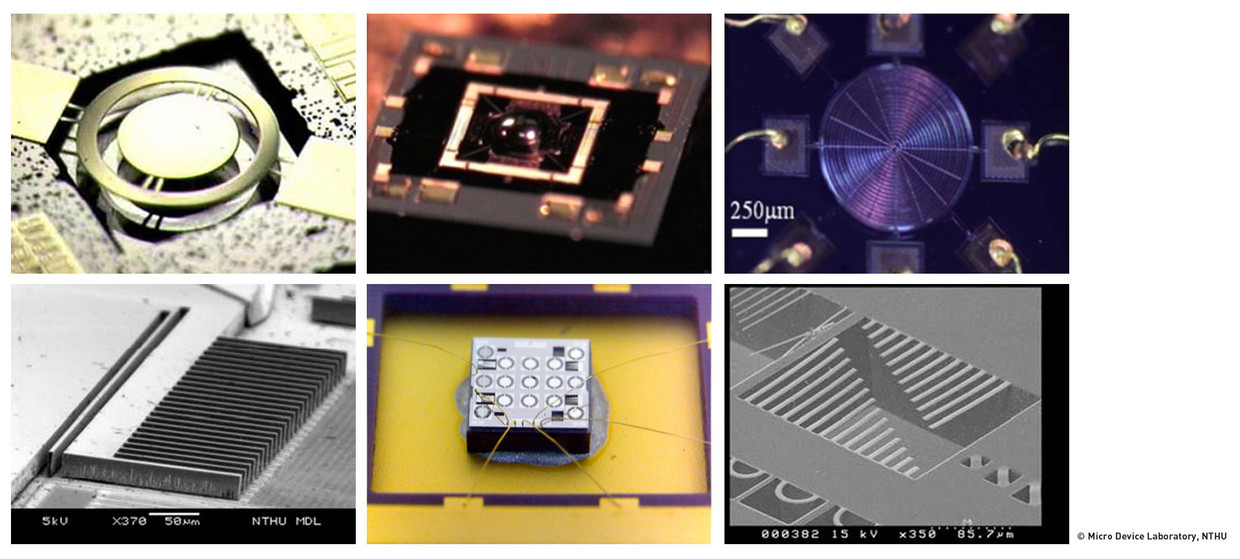Dr. Shih-Wei Lin is a researcher and die bonding specialist at Professor Weileun Fang’s Micro Device Laboratory of the National Tsing Hua University, Taiwan. Main focus of the Micro Device Laboratory is the design, fabrication and testing of innovative micro sensors and actuators for applications in the fields of IoT, mobile phone and smart X. For example, this includes MEMS microphone devices and tactile force sensors for high-precision measuring tasks.
In the past, building demonstrators and prototypes of MEMS sensors and actuators at the Micro Device Laboratory was done manually with microscope and tweezers, said Dr. Shih-Wei Lin. It somehow did the job, but was hardly reproducible and, of course, had many limitations, as MEMS components are getting smaller and more integrated.
To improve the situation, Professor Fang, Dr. Lin and the lab team started looking into die bonder equipment.
Looking for a game changer
Dr. Lin knew that investing into a die bonder which could integrate multiple bonding technologies in one system, while offering process stability, high accuracy, and traceability of all development steps, would be a game changer.
The NTHU already had several die bonder systems from Finetech, and Dr. Lin even had personal experience with the system and Sigmatek, who represent Finetech in Taiwan. So it was only natural that Finetech was among the potential equipment manufacturers he had in mind, said Dr. Lin.
Lucky for them, another department happened to have a last generation FINEPLACER® lambda for micro-LED bonding, so it was very easy for the Micro Device Laboratory team to try out thoroughly if the machine was up to the MEMS job. As it turned out, with its wide spectrum of supported technologies and sub-micron placement accuracy, the FINEPLACER® die bonder proved more than capable.
Simply ingenious
Pleased with the results of the evaluation, Professor Fang and Dr. Lin decided to purchase the recently introduced improved FINEPLACER® lambda 2 in a configuration for soldering and adhesive bonding. And the new die bonder did not disappoint.
The FINEPLACER® lambda 2 offers a placement accuracy better 1 µm, ideally suited for the most demanding MEMS assemblies. But almost more importantly, Dr. Lin found assembling MEMS sensors and actuators on the FINEPLACER® lambda 2 to be very easy and user-friendly.
The machine is set up quickly and ready to work. The chip to substrate alignment is highly intuitive. The air cushioned positioning table, simply activated via foot switch, comes with additional micrometer screws. This allows for an easy and precise manipulation of the presentation stage. Combined with the high-resolution vision alignment system, the chip to substrate alignment is accomplished within seconds.
Dr. Lin also pointed out the benefits of the two-stage tool touchdown sequence. When he swivels the placement arm into its lowest position, the bonding tool still hovers above the chip at a defined gap. Then he gently lowers the placement arm with the set bonding force using a slider controller. This mechanism avoids force overshoot from sudden tool touchdown and is very helpful when working with fragile MEMS components.
Unlike in the past, the MEMS assembly processes are now 100% reproducible and easy to modify due to the powerful IPM Command bonding software. This is supported by a side-mounted Process Video Module, which allows in-situ process observation for immediate visual feedback.
Finally, Dr. Lin also liked the fact that Finetech offers customized heated and unheated bonding tools, which further extends the spectrum of possible applications and leaves many possibilities for future developments.
Operating our FINEPLACER® lambda 2 is simple, the alignment principle is ingenious and the overall process time has shortened significantly.

Micro Device Laboratory of the National Tsing Hua University, Taiwan




